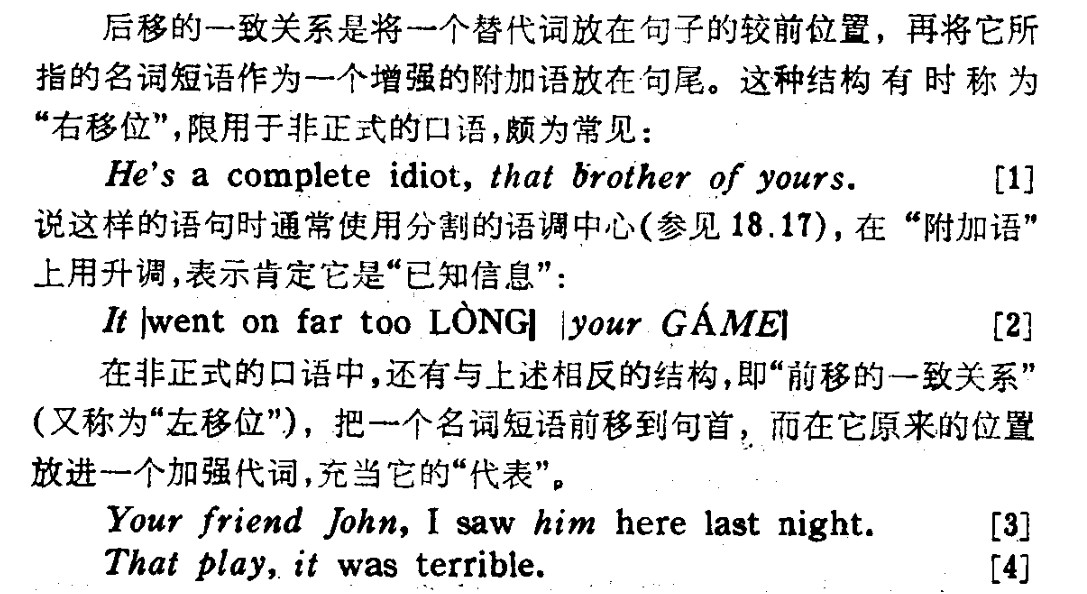2 偏置结构和同位语的辨析和区别问题
1.My father, he's not interested in this any more.(左偏置结构)
2.That's a beautiful thing, your picture!(右偏置结构)
3.Streamlined swimmers and bloodhounds of the sea, sharks are equipped with an extraordinary sense of smell.(同位语)出自章振邦新编英语语法教程,书里面说:有时同位语也可位于与之同位的名词词组之前。
4.Lucy was born in a small town of North America, the daughter of a poor and ignorant miner.(同位语)(出自章振邦新编英语语法教程)
问题:既然同位语的位置在与之同位的名词之前或之后都可以,那该如何区分结构形式与之类似的偏置结构?两者有何区别?还是说,这
仅仅是两者种不同的分析方式?
最佳答案 2022-02-22 22:39
我理解偏置结构侧重强调,同位语侧重补充说明,这是这两个语义上的区别。用法也有所不同。
My father, he's not interested in this any more. My father 是说话人要强调的主题。因此,有时作者在句尾用感叹号来加强语气。比较:
My teacher, he's a nice person!(左偏)
He, my teacher, is a nice person.(同位)
你的例句如果改用同位语,需要这样变化:He, my father, is not interested in this any more. 前置同位语一般用冠词,不用代词。如:A father of three, William has lived on this farm for many years. (同位语)
偏置结构用法比较过时,现在多存在于口语或演讲等非正式文体中。正式文体多用同位语。左偏置比右偏置更多见。
另例:This little girl, the dog bit her.
这个左偏置比较特殊些,强调this little girl. 不是dog. 与句中her 对应。改为右偏置是:The dog bit her, this little girl.这时一般重读her,或说她的名字代替her。如果改为同位语,这种情形,一般改用冠词:a/the little girl. 不用语气较强的this,即:The dog bit her, a/the little girl.
以上是个人对这一用法的领悟,仅供参考!
如果觉得我的回答对您有用,请随意打赏。你的支持将鼓励我继续创作!

- 3 关注
- 3 收藏,2347 浏览
- YCM 提出于 2022-02-21 23:43
相似问题
- 句子成分分析 1 回答
- 同位语用法 0 回答
- 句子理解与分析(涉及同位语) 1 回答
- 句子分析 1 回答
- 如何理解这句子里的to和what 1 回答
- 同位语从句是否有动宾关系 1 回答
-
 《高考英语备考1号·速效编》
《高考英语备考1号·速效编》
-
 《高考英语备考1号·写作编》
《高考英语备考1号·写作编》
-
 《高中英语晨读晚记》
《高中英语晨读晚记》
-
 《高中英语错题笔记》
《高中英语错题笔记》
-
 《零起点考大学英语》
《零起点考大学英语》
-


